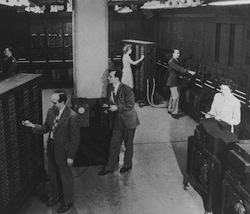Top 10 Qualities of a Great IT Shop
In 2008, I wrote an article for Computerworld describing the 10 qualities of a great IT shop based on observations during my 40 years in IT.
Here's the link to the entire article: Top 10 qualities of a great IT shop.
My idea was to try to list the 10 items that need to be present in a great IT organization to help a person analyze a company where they were thinking about taking a job or for consultative analysis.
Here is my top ten list:
1. IT Reports to the CEO (or COO)
2. An IT Steering Committee determines the company automation agenda
3. IT participates in the long-term planning process
4. IT uses an system development life cycle (SDLC) for project management
5. IT uses up-to-date hardware and software
6. IT has a commitment to IT training
7. IT has technical and management career paths
8. IT has a defined business continuity program that is regularly tested
9. IT has a high visibility system security function
10. IT regularly uses metrics and status reports to show performance

It seems to me that, unfortunately, each company manages IT in its own way and there is no universal consensus. This is not true for other organizational roles. For example, most, if not all, CFOs report to the CEO, while CIOs may report to the CEO, but just as frequently report to the CFO or some other C-level executive.
I believe that even though there is rapid change in most elements of IT, there are also basic underlying methodologies that exist in successful IT shops.
I recently was asked to put on a seminar at a firm in California discussing these 10 qualities. It was very productive and at the end of the presentation, the team discussed how to implement the ideas in their IT department. There was consensus that these ten qualities would greatly solve many of the issues facing the department.
As I mentioned, I initially wrote the list as a way to help ITers evaluate a company that they were thinking of joining. I realized that it could also be used to critique one’s own operation. The more of these items that exist in your company, the more likely that you will have a successful IT operation.
Use the comments section below to let me know what you find out or what your experience has been.










